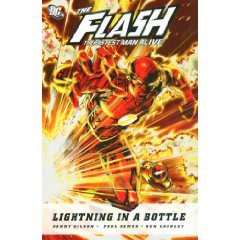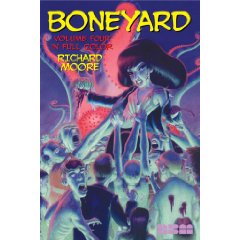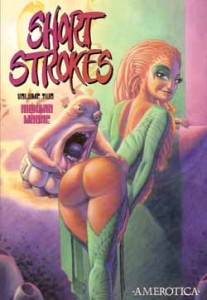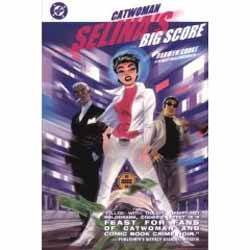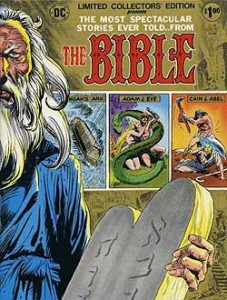
By Bob Haney & various (DC Comics)
ISBN13: 978-1-84576-677-1
The concept of kid hero teams was not a new one when the 1960s Batman TV show finally prompted DC to trust their big heroes’ assorted sidekicks with their own regular comic in a fab, hip and groovy ensemble as dedicated to helping kids as they were to stamping out insidious evil.
The biggest difference between wartime groups as The Young Allies, Boy Commandos and Newsboy Legion or such 1950s holdovers as The Little Wise Guys or Boys Ranch and the creation of the Titans was quite simply the burgeoning phenomena of “The Teenager†as a discrete social and commercial force. These were kids who could be allowed to do things themselves without constant adult help or supervision.
As early as the June-July 1964 issue of The Brave and the Bold (#54), DC’s powers that be had tested the waters with a gripping tale by writer Bob Haney superbly illustrated by unsung genius Bruno Premiani. ‘The Thousand-and-One Dooms of Mr. Twister’ united Kid Flash, Aqualad and Robin the Boy Wonder in a desperate battle against a modern wizard-cum-Pied Piper who had stolen the teen-agers of Hatton Corners. The young heroes had met in the town by chance when students invited them to mediate in a long-running dispute with the town adults.
This element of a teen “court-of-appeal†was the motivating factor in many of the group’s cases. One year later the team reformed for a second adventure (The Brave and the Bold #60, by the same creative team) and introduced two new elements. ‘The Astounding Separated Man’ featured more misunderstood kids – this time in the coastal hamlet of Midville – threatened by an outlandish monster whose giant body parts could move independently. They added Wonder Girl (not actually a sidekick, or even a person, but rather an incarnation of Wonder Woman as a child – a fact the writers of the series seemed blissfully unaware of) and finally had a team name: ‘Teen Titans’.
Their final try-out appearance was in Showcase (issue #59, November-December 1965), birthplace of so many hit comic concepts, and was the first to be drawn by the brilliant Nick Cardy (who became synonymous with the 1960s series). ‘The Return of the Teen Titans’ pitted the team against teen pop trio ‘The Flips’ who were apparently also a gang of super-crooks, but as was so often the case the grown-ups had got it all wrong…
The next month their own comic debuted (#1 was dated January-February 1966 – released mere weeks before the Batman TV show aired on January 12th) with Robin the point of focus on the cover – and most succeeding ones. Haney and Cardy produced an exotic thriller entitled ‘The Beast-God of Xochatan!’ which saw the team act as Peace Corps representatives involved in a South American drama of sabotage, giant robots and magical monsters. The next issue held a fantastic mystery of revenge and young love involving ‘The Million-Year-Old Teen-Ager’.
‘The Revolt at Harrison High’ cashed in on the craze for drag-racing in a tale of bizarre criminality. Produced during a historically iconic era, many readers now can’t help but cringe when reminded of such daft foes as ‘Ding-Dong Daddy’ and his evil biker gang, and of course the hip, trendy dialogue (it wasn’t that accurate then, let alone now) is pitifully dated, but the plot is strong and the art magnificent.
‘The Secret Olympic Heroes’ guest-starred Green Arrow’s teen partner Speedy in a very human tale of parental pressure at the Olympics, although there’s also skulduggery aplenty from a terrorist organisation intent on disrupting the games. In #5’s ‘The Perilous Capers of the Terrible Teen’ the Titans faced the dual task of helping a troubled young man and capturing a super-villain called the Ant, despite all evidence indicating that they’re the same person, and another DC sidekick made his Titans debut in ‘The Fifth Titan’. Easily the weakest tale in the book, Beast Boy (from the iconic Doom Patrol) falls under the spell of an unscrupulous circus owner and the kids need to set things right. Painfully illustrated by Bill Molno and Sal Trapani, it’s the absolute low-point of a stylish run.
Quite a few fans would disagree, however, citing #7’s ‘The Mad Mod, Merchant of Menace’ as the biggest stinker, but beneath the painfully dated dialogue there’s a witty, tongue-in-cheek tale of swinging London and novel criminality, plus the return of the magnificent Nick Cardy to the art chores.
It was back to America for ‘A Killer called Honey Bun’ (illustrated by Irv Novick and Jack Abel) another tale of intolerance and misunderstood kids, played against a backdrop of espionage in Middle America, and #9’s ‘Big Beach Rumble’ found the Titans refereeing a vendetta between rival colleges when modern day pirates crash the scene. Novick pencilled it and Cardy’s inking made it all very palatable.
The editor obviously agreed as the art remained for the next few issues. ‘Scramble at Wildcat’ was crime caper featuring dirt-bikes and desert ghost-towns, whilst Speedy returned in #11’s spy-thriller ‘Monster Bait’. Twin hot-topics the Space-Race and Disc Jockey’s informed the whacky sci fi thriller ‘Large Trouble in Space-ville!’ and #13 was a veritable classic as Haney and Cardy produced a seasonal comics masterpiece with ‘The TT’s Swingin’ Christmas Carol!’, a styish retelling that’s one of the most reprinted Titans tales ever.
At this time Cardy’s art really opened up as he grasped the experimental flavour of the times. The cover of #14, as well as the interior illustration for the grim psycho-thriller ‘Requiem for a Titan’ are unforgettable. The tale introduced the team’s first serious returning villain (Mad Mod does not count!) the Gargoyle is mesmerising and memorable, and although he only inked Lee Elias’s pencils for #15’s eccentric tryst with the Hippie counter-culture, ‘Captain Rumble Blasts the Scene!’ is a genuinely unique crime-thriller from a time when nobody over age 25 understood what the youth of the world was doing…
Teen Titans #16 returned to more solid ground with the superb thriller ‘The Dimensional Caper!’ when aliens infiltrate a rural high-school (and how many times have you seen that plot used since this 1968 epic?). Cardy’s art reached dizzying heights of innovation both here and in the next issue’s waggish jaunt to London ‘Holy Thimbles, It’s the Mad Mod!’, a criminal chase through Cool Britannia which even included a command performance from Her Majesty, the Queen!
This volume ends with a fannish landmark as novice writers Len Wein and Marv Wolfman got a big break with a tale that introduced Russian superhero Starfire and set them firmly on a path of teen super-team writing. ‘Eye of the Beholder’ is a cool cat burglar yarn set in trendy Stockholm, drawn with superb understatement by Bill Draut, and acts a perfect indicator of the changes in style and attitude that would become part of the Teen Titans and the comics industry itself.
Although perhaps dated in delivery, these tales were a liberating experience for kids when first released. They truly betokened a new empathy with independent youth and tried to address problems that were more relevant to and generated by that specific audience. That they are so captivating in execution is a wonderful bonus. This is absolute escapism and absolutely delightful.
© 1964-1968, 2006 DC Comics. All Rights Reserved.

